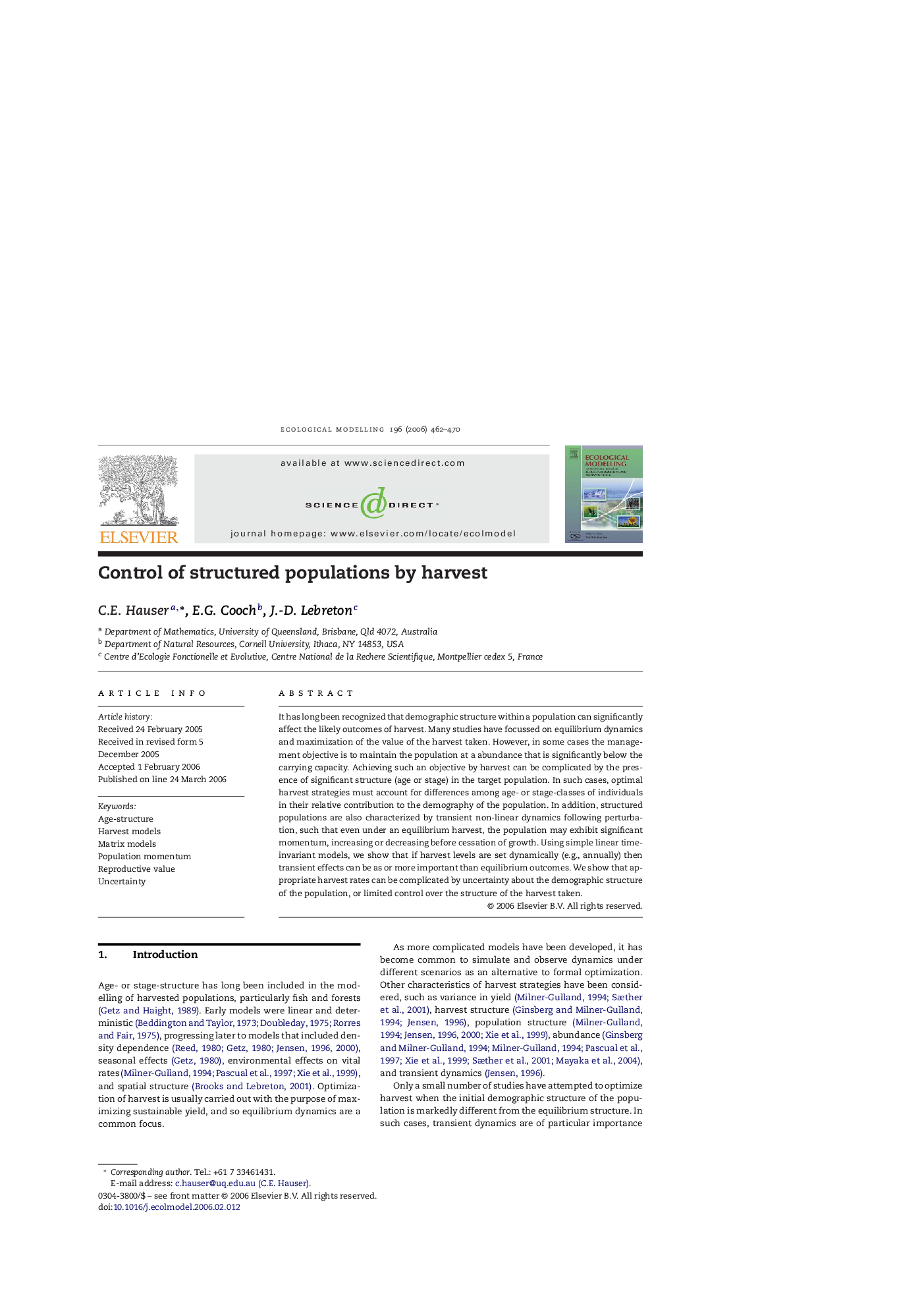| Article ID | Journal | Published Year | Pages | File Type |
|---|---|---|---|---|
| 4379162 | Ecological Modelling | 2006 | 9 Pages |
It has long been recognized that demographic structure within a population can significantly affect the likely outcomes of harvest. Many studies have focussed on equilibrium dynamics and maximization of the value of the harvest taken. However, in some cases the management objective is to maintain the population at a abundance that is significantly below the carrying capacity. Achieving such an objective by harvest can be complicated by the presence of significant structure (age or stage) in the target population. In such cases, optimal harvest strategies must account for differences among age- or stage-classes of individuals in their relative contribution to the demography of the population. In addition, structured populations are also characterized by transient non-linear dynamics following perturbation, such that even under an equilibrium harvest, the population may exhibit significant momentum, increasing or decreasing before cessation of growth. Using simple linear time-invariant models, we show that if harvest levels are set dynamically (e.g., annually) then transient effects can be as or more important than equilibrium outcomes. We show that appropriate harvest rates can be complicated by uncertainty about the demographic structure of the population, or limited control over the structure of the harvest taken.
